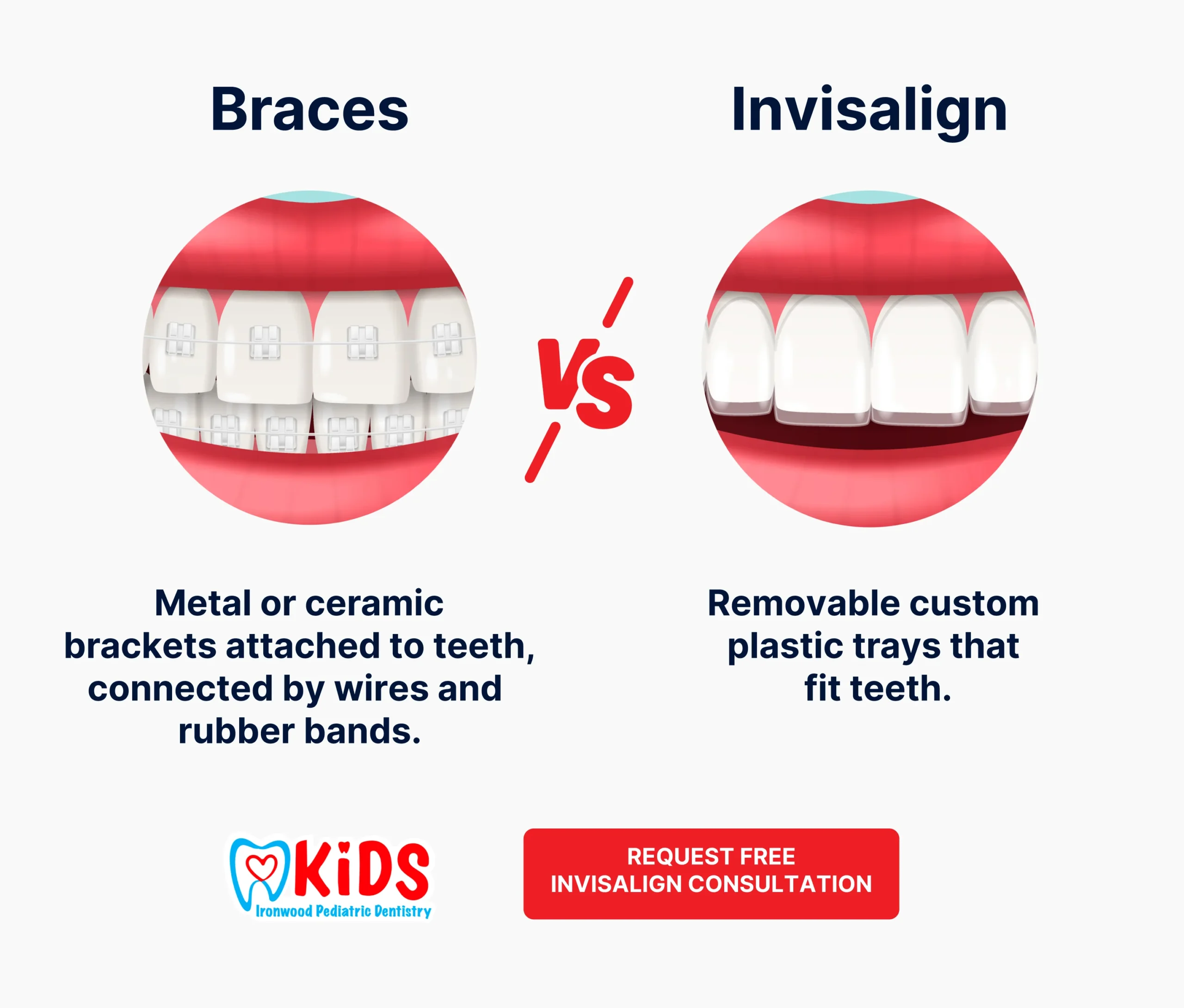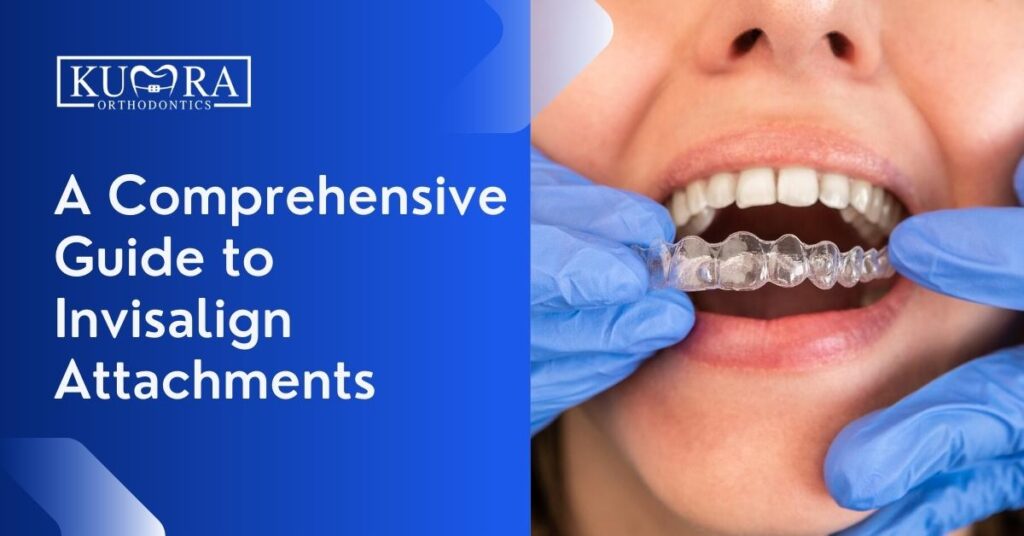Invisalign vs. Traditional Braces: Which Alternative Is Right for You?
When considering orthodontic therapy, the option between Invisalign and traditional braces offers several important aspects that merit mindful evaluation. Invisalign provides a discreet choice with removable aligners, while conventional dental braces provide an extra visible yet effective remedy for severe imbalance.
Review of Therapy Options

On the other hand, typical dental braces consist of metal brackets and cords that are adhered to the teeth. This technique applies continuous pressure in time to attain placement. While effective for intricate orthodontic issues, conventional braces need regular check outs for adjustments and can present obstacles in preserving oral hygiene because of the trouble of cleansing around brackets and cables.
Both options have their values, and the choice commonly rests on certain dental conditions, way of living choices, and individual conformity. Ultimately, speaking with an orthodontic expert is critical for identifying one of the most appropriate therapy plan tailored to individual needs. Comprehending the subtleties of each option can considerably affect the general success of orthodontic therapy.
Visual Considerations
A substantial aspect affecting the option between Invisalign and conventional dental braces is the aesthetic allure each therapy uses. Invisalign aligners are crafted from clear plastic, making them essentially unseen when worn. This discreet look is specifically interesting teens and adults who might feel uneasy about their orthodontic therapy. The ability to maintain a natural smile throughout the positioning process can substantially boost the client's confidence in social and specialist settings.
In contrast, standard braces contain steel brackets and wires, which can be more noticeable. While improvements in orthodontic modern technology have actually caused the growth of smaller sized braces and tinted elastics, standard dental braces still maintain a more noticeable profile. For some people, the exposure of braces might hinder them from looking for necessary therapy.
Ultimately, the option between Invisalign and typical braces may depend upon individual choices relating to looks. Individuals that focus on discretion commonly lean toward Invisalign, while those who are less concerned regarding presence might go with standard dental braces. Understanding the aesthetic ramifications of each choice is essential for making an educated choice that straightens with one's way of living and choices.
Comfort and Convenience
In terms of ease, Invisalign aligners are detachable, enabling individuals to appreciate their favorite foods without limitation and preserve optimum oral health. Brushing and flossing are streamlined, as the aligners can be gotten throughout these regimens, whereas conventional braces need cautious maneuvering around braces and cords.
Additionally, Invisalign's progressive system permits less orthodontic check outs. Patients generally obtain several collections of aligners at when, which can simplify the therapy procedure and minimize time spent in the orthodontist's chair. On the other hand, conventional braces demand normal modifications, making them less hassle-free for those with hectic routines. Invisalign. Generally, the comfort and ease of Invisalign make it an appealing choice for numerous people looking for orthodontic treatment.
Therapy Duration and Effectiveness
While both Invisalign and typical dental braces are effective in fixing dental misalignments, the duration of therapy can differ significantly in between both choices. Generally, Invisalign treatment can take anywhere from 12 to 18 months, relying on the complexity of the situation. The clear aligners function by progressively moving teeth right into their wanted placements, and normal follow-ups with an orthodontist help make Check This Out sure development continues to be on track.
On the other hand, typical braces frequently call for a longer commitment, normally ranging from 18 months to 3 years. This is due to their set nature and the usage of cords and braces, which can be much more efficient for intricate cases and serious imbalances (Invisalign). The treatment performance of typical dental braces is well-documented, as they permit exact changes and better control over tooth movement
Inevitably, the choice between Invisalign and traditional dental braces may pivot on both the expected therapy duration and the certain oral problems at hand. Consulting with an orthodontist is important, as they can supply tailored suggestions based upon private needs, making certain the selected approach lines up with desired end results and durations.
Expense Contrast and Insurance Policy Alternatives
Expense plays a substantial role in the decision-making procedure for people thinking about orthodontic therapy, whether choosing Invisalign or standard braces. Typically, the price of Invisalign arrays from $3,000 to $8,000, while traditional dental braces normally set you back in between $2,000 and $6,000. Elements affecting these costs consist of the intricacy of the case, the period of treatment, and geographical area.
Numerous oral insurance strategies offer partial insurance coverage for orthodontic treatments, but the specifics can vary extensively. Typically, typical braces may be extra often covered by insurance policy plans contrasted to Invisalign, which some insurance providers classify as a cosmetic treatment.
In addition, several orthodontic methods supply flexible settlement plans, making both therapy options a lot more obtainable. Individuals should ask about prospective financing alternatives and discount rates for upfront repayments. Evaluating the total expense, consisting of insurance benefits and repayment strategies, is crucial for making an informed choice that lines up with both visual preferences and spending plan considerations.

Verdict
In summary, the selection in between Invisalign and conventional braces hinges on several aspects, consisting of aesthetic choices, comfort, therapy duration, and price. Invisalign offers a very discreet, detachable choice that promotes oral health and dietary versatility, while traditional dental braces may be preferable for intricate oral issues and frequently come at a lower price factor. Inevitably, appointment with an orthodontist is necessary to analyze private situations and identify the most ideal therapy you can find out more choice for attaining optimal oral placement.
When taking into consideration orthodontic therapy, the option between Invisalign and conventional braces offers numerous crucial aspects that warrant mindful analysis.Contrasting Invisalign you can check here and standard braces reveals distinct therapy alternatives for orthodontic modification.While both Invisalign and standard dental braces are efficient in dealing with dental imbalances, the period of therapy can vary considerably between the two alternatives.Price plays a considerable role in the decision-making process for individuals taking into consideration orthodontic treatment, whether choosing for Invisalign or standard braces.In summary, the selection between Invisalign and traditional braces pivots on numerous factors, including aesthetic choices, convenience, treatment period, and expense.